HAVE you ever noticed that many plants grow in spiral formations? A pineapple, for example, may have 8 spirals of scales going around one way and 5 or 13 going in the opposite direction.
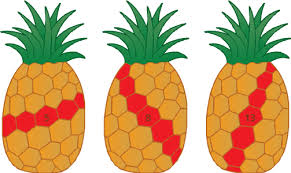
If you look at the seeds in a sunflower, you may be able to see 55 and 89 spirals crossing over each other or perhaps even more. You may even find spirals on a cauliflower.


Once you start noticing spirals, visits to your fruit and vegetable store may take on new interest. Why do plants grow in this way? Does the number of spirals have any significance?
How Do Plants Grow?
Most plants form new organs such as stems, leaves, and flowers from a tiny central growing point called a meristem. Each new structure, called a primordium, develops and grows out from the center in a new direction, forming an angle with the previous growth. (Curiously, the sunflower is unusual in that the florets that become seeds begin to form spirals from the rim of the head rather than the center.) Most plants arrange new growths at a unique angle that produces spirals. What angle is it?
Consider this challenge: Imagine trying to engineer a plant so that new growths are compactly arranged around the growing point with no wasted space. Suppose you chose to make each new primordium grow out at an angle of two fifths of a revolution from the previous growth. You would have the problem of every fifth primordium growing from the same spot and in the same direction. They would form rows with wasted space between the rows. The truth is, any simple fraction of a revolution results in rows rather than optimal packing. Only what has been termed the “golden angle” of approximately 137.5 degrees results in an ideally compact arrangement of growths.
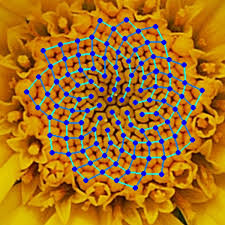


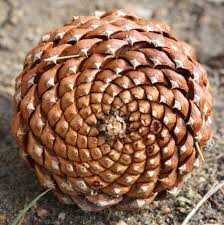
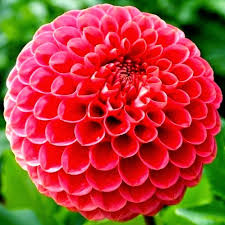
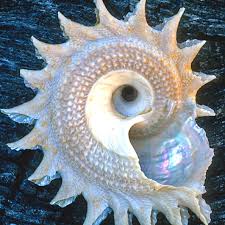

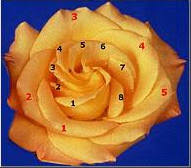
What makes this angle so special?
The golden angle is ideal because it cannot be expressed as a simple fraction of a revolution. The fraction 5/8 is close to it, 8/13 is closer, and 13/21 is closer still, but no fraction exactly expresses the golden proportion of a revolution. Thus, when a new growth on the meristem develops at this fixed angle with respect to the preceding growth, no two growths will ever develop in exactly the same direction. Consequently, instead of forming radial arms, the primordia form spirals.
Remarkably, a computer simulation of primordia growing from a central point produces recognizable spirals only if the angle between new growths is correct to a high degree of accuracy. Straying from the golden angle by even one tenth of a degree causes the effect to be lost.
How Many Petals on a Flower?
Interestingly, the number of spirals that result from growth based on the golden angle is usually a number from a series called the Fibonacci sequence. This series was first described by the 13th-century Italian mathematician known as Leonardo Fibonacci. In this progression, each number after 1 is equal to the sum of the previous two numbers—1, 1, 2, 3, 5, 8, 13, 21, 34, 55, and so on.
The flowers of many plants that exhibit a spiral growth pattern often have a Fibonacci number of petals. According to some observers, there is a tendency for buttercups to have 5 petals, bloodroots 8, fireweeds 13, asters 21, common field daisies 34, and Michaelmas daisies 55 or 89. Fruit and vegetables often have features that correspond to Fibonacci numbers.
Information from Intriguing Patterns in Plants — Watchtower ONLINE LIBRARY
What else features Fibonacci spirals?
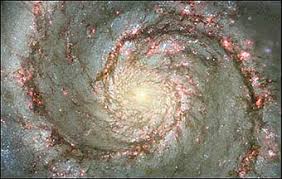

And even in the design of the human body........
Can this all possibly be accidental?
If you look at the seeds in a sunflower, you may be able to see 55 and 89 spirals crossing over each other or perhaps even more. You may even find spirals on a cauliflower.
Once you start noticing spirals, visits to your fruit and vegetable store may take on new interest. Why do plants grow in this way? Does the number of spirals have any significance?
How Do Plants Grow?
Most plants form new organs such as stems, leaves, and flowers from a tiny central growing point called a meristem. Each new structure, called a primordium, develops and grows out from the center in a new direction, forming an angle with the previous growth. (Curiously, the sunflower is unusual in that the florets that become seeds begin to form spirals from the rim of the head rather than the center.) Most plants arrange new growths at a unique angle that produces spirals. What angle is it?
Consider this challenge: Imagine trying to engineer a plant so that new growths are compactly arranged around the growing point with no wasted space. Suppose you chose to make each new primordium grow out at an angle of two fifths of a revolution from the previous growth. You would have the problem of every fifth primordium growing from the same spot and in the same direction. They would form rows with wasted space between the rows. The truth is, any simple fraction of a revolution results in rows rather than optimal packing. Only what has been termed the “golden angle” of approximately 137.5 degrees results in an ideally compact arrangement of growths.

What makes this angle so special?
The golden angle is ideal because it cannot be expressed as a simple fraction of a revolution. The fraction 5/8 is close to it, 8/13 is closer, and 13/21 is closer still, but no fraction exactly expresses the golden proportion of a revolution. Thus, when a new growth on the meristem develops at this fixed angle with respect to the preceding growth, no two growths will ever develop in exactly the same direction. Consequently, instead of forming radial arms, the primordia form spirals.
Remarkably, a computer simulation of primordia growing from a central point produces recognizable spirals only if the angle between new growths is correct to a high degree of accuracy. Straying from the golden angle by even one tenth of a degree causes the effect to be lost.
How Many Petals on a Flower?
Interestingly, the number of spirals that result from growth based on the golden angle is usually a number from a series called the Fibonacci sequence. This series was first described by the 13th-century Italian mathematician known as Leonardo Fibonacci. In this progression, each number after 1 is equal to the sum of the previous two numbers—1, 1, 2, 3, 5, 8, 13, 21, 34, 55, and so on.
The flowers of many plants that exhibit a spiral growth pattern often have a Fibonacci number of petals. According to some observers, there is a tendency for buttercups to have 5 petals, bloodroots 8, fireweeds 13, asters 21, common field daisies 34, and Michaelmas daisies 55 or 89. Fruit and vegetables often have features that correspond to Fibonacci numbers.
Information from Intriguing Patterns in Plants — Watchtower ONLINE LIBRARY
What else features Fibonacci spirals?
And even in the design of the human body........
Can this all possibly be accidental?
Last edited:
